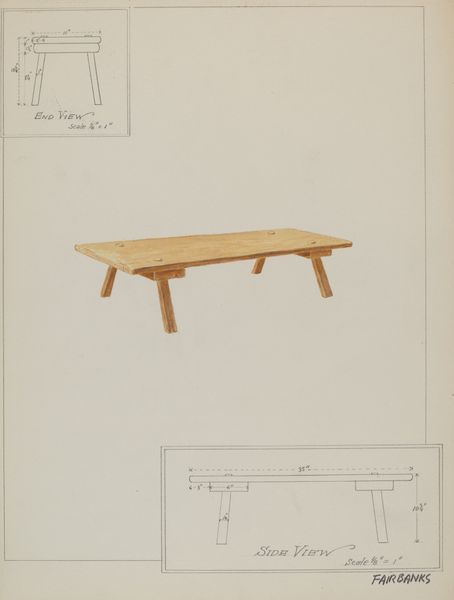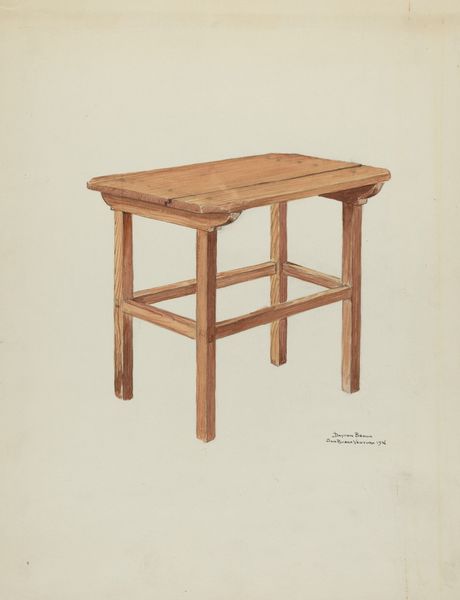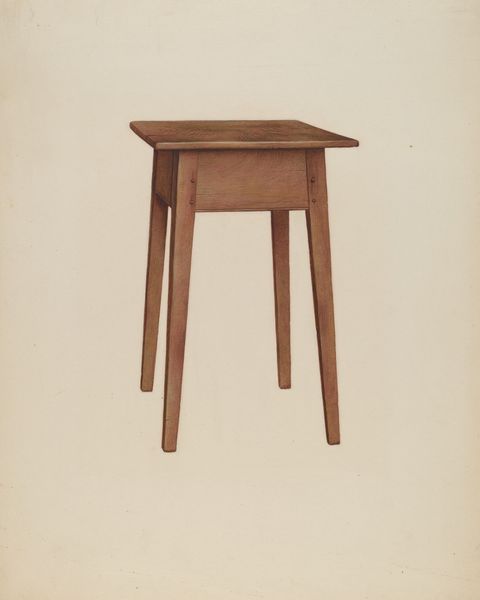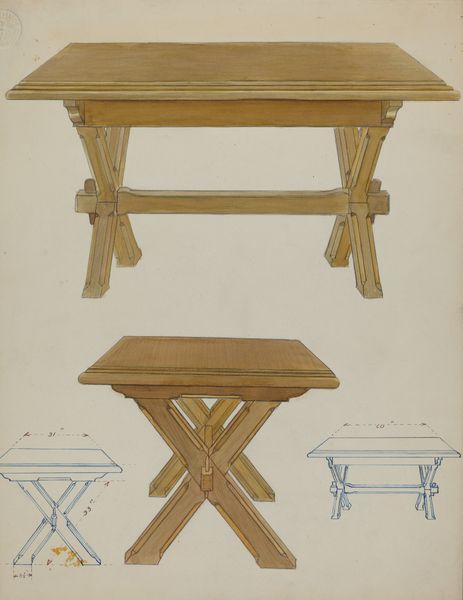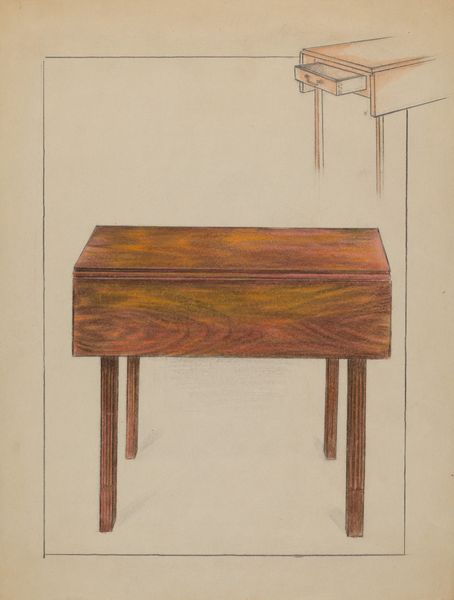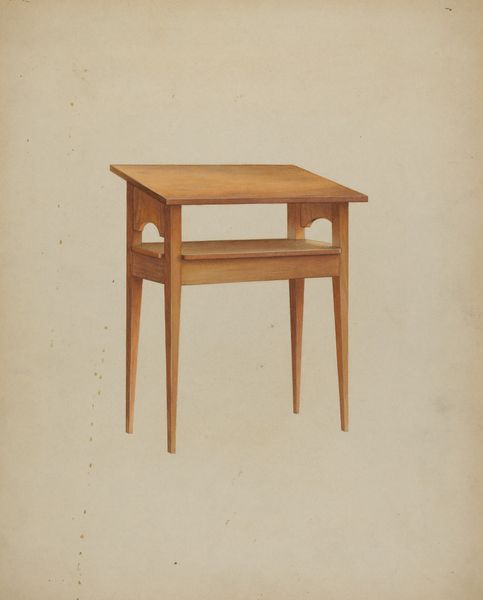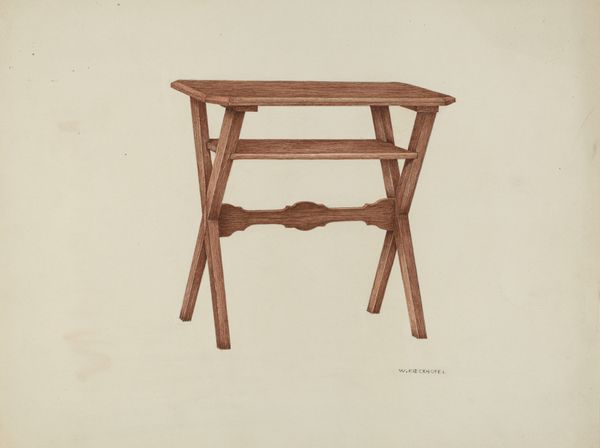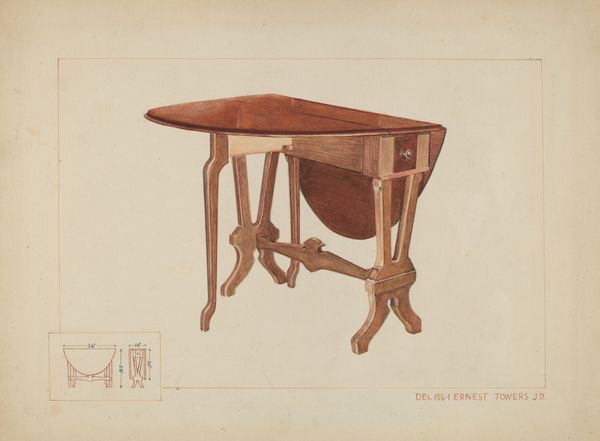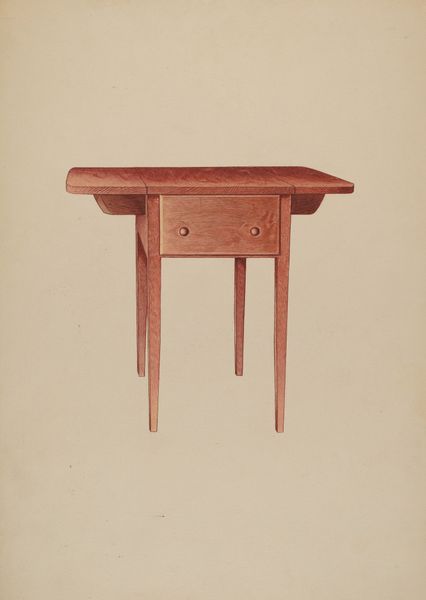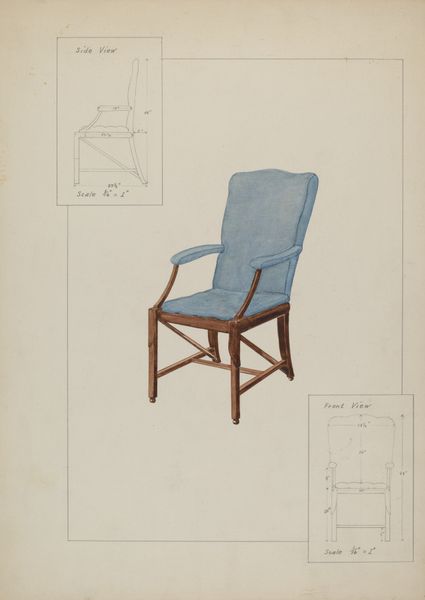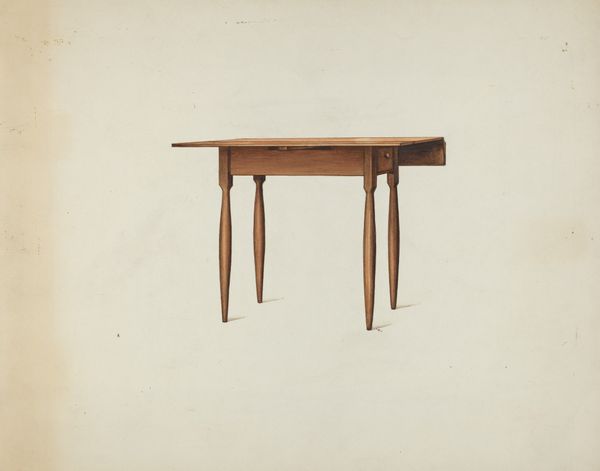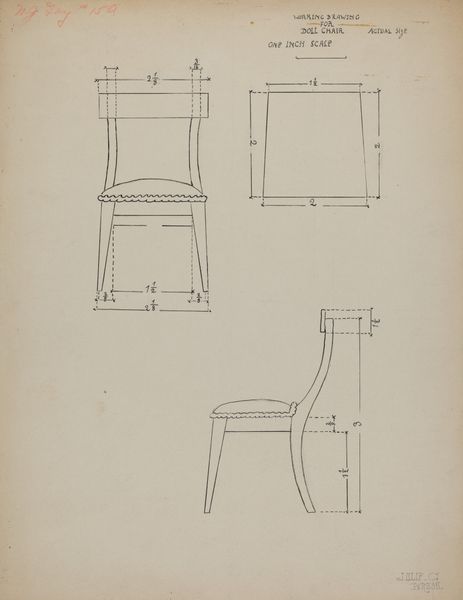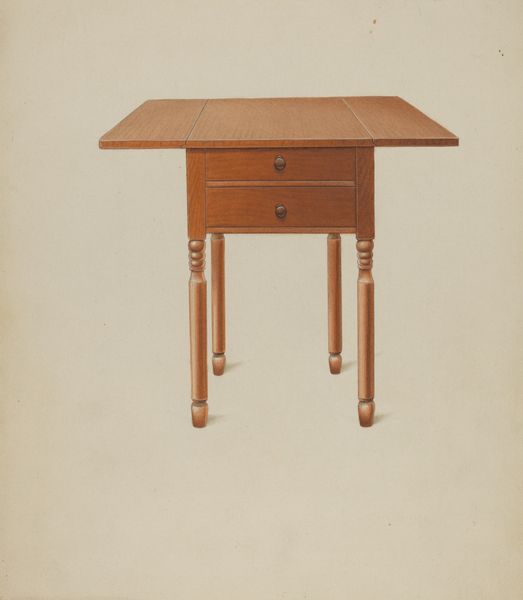
drawing, paper, pencil
#
drawing
#
paper
#
geometric
#
pencil
#
watercolor
Dimensions: overall: 36.8 x 26.5 cm (14 1/2 x 10 7/16 in.) Original IAD Object: 28"high; 18"x19". See data sheet for details.
Copyright: National Gallery of Art: CC0 1.0
Editor: This drawing, simply titled "Table" by George Fairbanks, was made around 1937, using pencil and paper. It looks like a technical drawing. It has this slightly faded quality that makes me think of old blueprints, not quite art, but definitely interesting in its own way. What do you make of it? Curator: I see here a potent reminder of the labor involved in creation, often obscured by our focus on the finished product. Look at the detail, even in a seemingly simple subject. We are compelled to consider the artist as a worker, meticulously documenting an object destined for mass production or, perhaps, crafted individually. Editor: So, it's less about the *design* of the table and more about the work that goes into bringing a utilitarian object into existence? Curator: Precisely. Think about the paper, the pencil, the drafting tools - all commodities themselves. Each line drawn represents time, skill, and a conscious engagement with the materiality of both the subject and the art-making process. The technical drawings, the bottom view and side view with measurements. Fairbanks is not just presenting us with an image of a table. Editor: I never really thought about how much work it is to *draw* something before, beyond just sketching. Do you think this challenges our ideas of ‘high art’? Curator: It blurs those lines entirely. This "Table" is functional, destined for everyday use, potentially made through industrial processes. Fairbanks elevated its depiction by making this very deliberate drawing of a future product. It makes us think: Who made that, and how? What material conditions made its making possible? Editor: It’s almost subversive. I appreciate Fairbanks's intention and it made me look at ordinary things with a fresh perspective. Curator: It also allows us to appreciate craftsmanship in all forms, seeing value in the process, and questioning how labor and materials intersect in our daily lives.
Comments
No comments
Be the first to comment and join the conversation on the ultimate creative platform.
